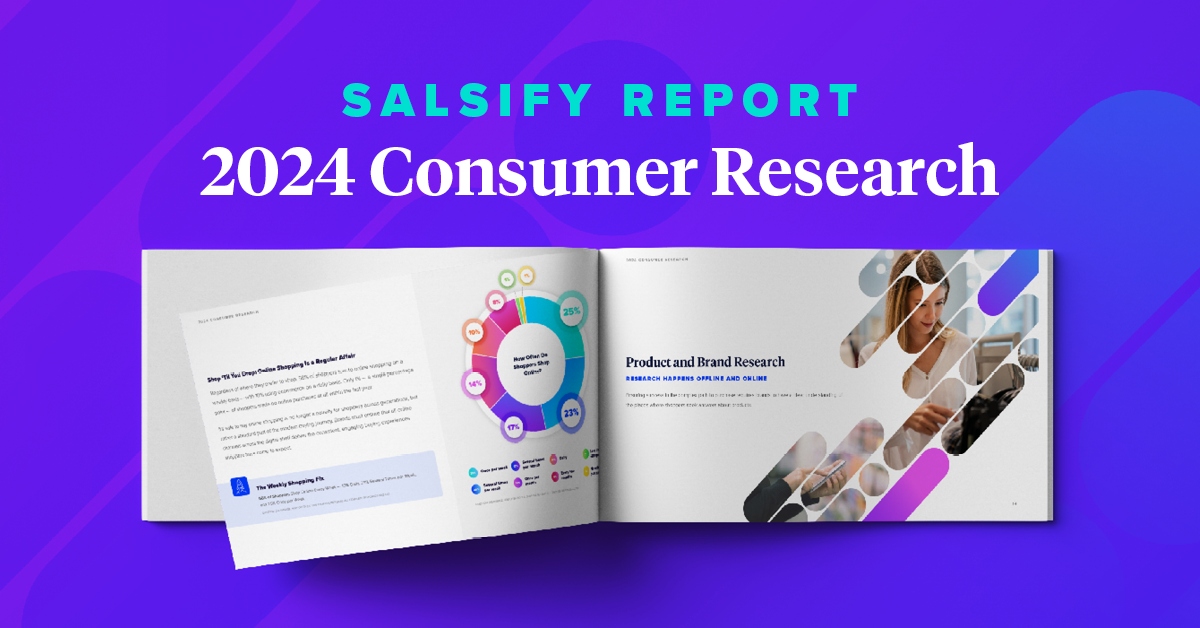Digital-Influenced Retail Will Describe 70% of U.S. Sales by 2027 — What Does This Mean for Brands?

Digital experiences now influence both online and offline shopping behaviors — and this influence is growing.
According to data from Forrester, 70% of U.S. retail sales will be digitally-influenced by 2027. This means that at some point in the purchasing journey, digital experiences affect the likelihood of sales conversion.
This digital influence is further divided into online and offline sales. Online retail sales are initiated and completed using ecommerce platforms, while offline digital-influenced retail sales occur when customers start by researching products online but finish their purchase in-store.
Put simply, the impact of digital influence is growing for online, offline, and hybrid brands.
This piece explores some of the tech and platforms that will underpin digitally influenced sales, which industries are seeing the most digital growth, and what brands can do to anticipate behavior changes, navigate new retail realities, and mitigate potential challenges.
Which Technologies and Platforms Will Underpin Digital-Influenced Retail?
As more consumers make digital experiences part of their purchase journey, companies must leverage technologies and platforms that meet evolving customer expectations. These include:
GenAI-Driven Chatbots
Chatbots can help answer common questions, help customers find what they’re looking for, and connect them with service agents. The rise of generative artificial intelligence (GenAI) streamlines this process, making it easier for chatbots to understand context and provide relevant answers.
The caveat? Making chatbots that people don’t hate. According to the Harvard Business Review, a recent study of chatbot interactions at a telecommunications company found that 66% received a one out of five satisfaction rating.
Inventory Management Solutions
While online influence impacts both ecommerce and offline purchases, influence only goes so far. Consider a customer who researches an item online but purchases in-store.
Before they leave the house, they check to make sure the item is listed as in stock at their preferred location. When they arrive, however, they’re told the product is out of stock because inventory management tools don’t update in real-time.
The result? A lost sale and potentially a lost customer.
To ensure that digital influence leads to purchase action, brands need inventory management solutions capable of tracking and updating stock levels on demand.
Product Experience Management (PXM) Solutions
Product experience management’s goal is to optimize every touch point on the digital shelf — everywhere.
PXM solutions support the process of creating and distributing high-quality, consistent, and cohesive product information across multiple consumer touch points. This information may include descriptions, images, videos, reviews, price, availability, and other relevant product data.
Given both the amount of data required and the need to personalize product information for each customer, PXM platforms are now critical to creating positive digital influence.
Where Will Digital Influence See Significant Growth?
While digital influence is expected to increase across the board for retail brands, some sectors are more likely than others to experience significant growth.
Consider data from the “Digital 2023 Global Overview Report” from DataReportal, which found that the fastest-growing ecommerce goods categories were food and beverages, with year-on-year increases of $16 billion and $1.1 billion, respectively.
It makes sense: While pandemic pressures changed the way consumers purchase perishable items, the success of online sale/physical delivery models has persisted as customers see the benefits of getting exactly what they want when they want it.
Fashion and beauty products are also growth sectors, in large part thanks to social platforms such as TikTok. As noted by fashion and lifestyle talent agency G&M Fashion Career, TikTok users have brand recall that is three times greater than other social communities.
If brands can create effective social campaigns using corporate accounts or via influencers, they can significantly increase their digital impact.
How Do Brands Anticipate and Adapt to Digital Shifts in Consumer Behavior?
Consumer behavior is changing. While the predicted recession of 2023 didn’t materialize, it did cause consumers to reconsider their purchasing habits.
For example, Salsify’s “2024 Consumer Research” identified the following shopping habits:
- 73% cite product quality as the biggest factor for determining brand loyalty;
- 39% of shoppers have increased their focus on budget-friendly items; and
- 31% engaged in more price comparisons before buying.
As a result, it’s not enough for brands to adapt when behavioral shifts happen — they need to anticipate what comes next. The easiest way to accomplish this goal? Consider the person, not the product.
It’s not about what brands sell or how they sell it. Instead, it’s about who they’re selling it to. Who’s the target audience? What are their preferences? Where do they prefer to make purchases? With 71% of customers now expecting personalization in their purchase journey per McKinsey & Company, putting them first only makes sense to boost sales and increase loyalty.
What Strategies Can Help Keep Brands Ahead of the Digital Curve?
Along with technology, brands need strategies to help navigate the digital curve.
Adopt an Omnichannel Approach
Consumers now interact with brands across websites, mobile applications, social platforms, and email. For brands to stay ahead of the digital curve, they need to create an omnichannel ecosystem that delivers a connected and consistent experience no matter which channels consumers prefer to use.
Ask, Don’t Assume
Want to know why digital influence isn’t meeting expectations? Ask — don’t assume.
Connect with customers using email forms or surveys. Read reviews online and check out social media posts. Unhappy buyers aren’t shy about sharing their experiences; use this data to boost your influence.
Get Social
There’s a reason they’re called “influencers.” Social media personalities who appear trustworthy and knowledgeable can help shape customer opinions and drive buyer actions.
While there’s no one-size-fits-all social framework, brands can’t afford to ignore the social impact. Whether it’s making regular posts on social media pages, engaging with users directly via DMs, or collaborating with online influencers, getting social is essential.
What Challenges May Emerge as Digital Influence Evolves — And How Do Brands Meet Them?
The biggest challenge for retail businesses as digital influence evolves? As digital-influenced retail becomes more prominent? Competition. With local, national, and global brands all competing for digital market share, companies must stand out from the crowd.
Loyalty programs are a good example. These programs aren’t exceptional — they’re standard practice. To keep existing customers and capture new consumers, consider offering personalized experiences such as discounts on products that are based on past shopping behaviors, or early access to new products based on purchase preferences.
Saturation is another growing concern. As more companies make the move to digital storefronts and ecommerce platforms, consumers can find themselves inundated with marketing and sales content. Eventually, even the best brands start to blend together.
The solution? Less is more. Don’t create content for content’s sake — create it because it offers value. With the right approach, this can benefit both businesses and buyers.
Consider a company creating two email campaigns per month with a 5% open rate and a 1% conversion rate. If they send emails to 1,000 customers, this equates to 20 purchases each month. If they opt for a more focused cycle that sees one campaign every two months, they may be able to see the same (or higher) sales volume while simultaneously spending less on marketing.
Under the (Digital) Influence
Digital influence now drives both ecommerce and offline purchases. To keep customers coming back both online and in-store, brands need the right combination of product technology, process adaptability, and consumer strategy.

2024 CONSUMER RESEARCH
Download the latest consumer research to explore how shoppers embrace omnichannel, blurring the lines between digital and physical experiences.
DOWNLOAD NOWWritten by: Doug Bonderud
Doug Bonderud (he/him) is an award-winning writer with expertise in ecommerce, customer experience, and the human condition. His ability to create readable, relatable articles is second to none.
Recent Posts
Do Brands Need Social Media Influencers In The Age of AI?
How Can Brands Align With Consumers’ New Year’s Resolutions?
5 Ecommerce Tips To Help Marketers Enter the New Year Stress-Free
Subscribe to the Below the Fold Newsletter
Standing out on the digital shelf starts with access to the latest industry content. Subscribe to Below the Fold, our monthly content newsletter, and join other commerce leaders.

.svg)